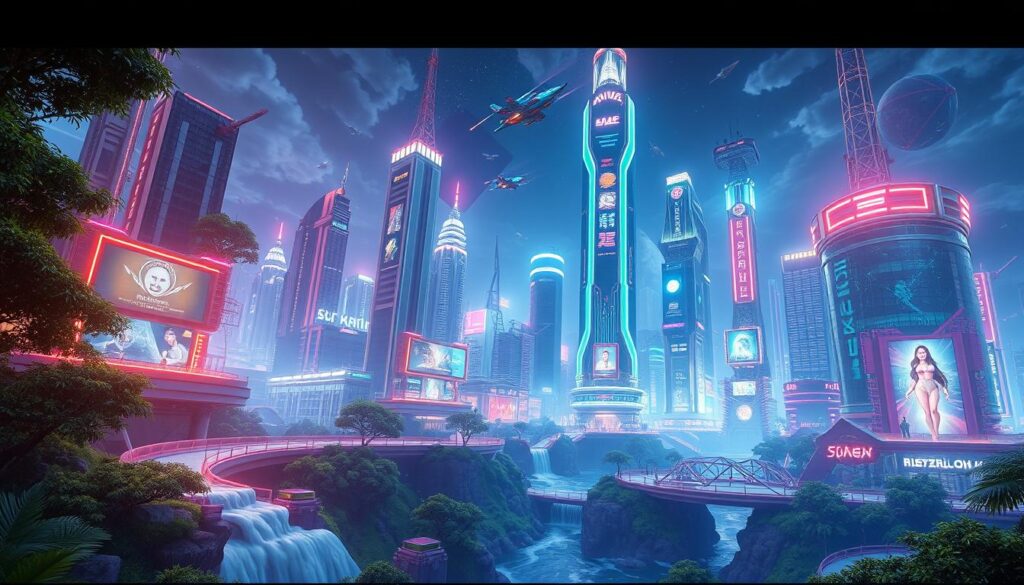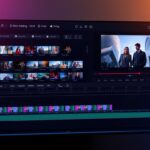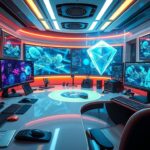CGI animation represents the art and technology behind the creation of animated visuals using computer-generated imagery. This innovative approach combines advanced software and skills to produce intricate 3D models, transforming traditional concepts into captivating narratives that resonate with audiences. As digital art evolves, the significance of 3D rendering grows, facilitating the creation of immersive environments that enhance visual storytelling. The realm of CGI is vital in today’s entertainment and media landscape, enabling artists to craft experiences that engage and inspire.
Key Takeaways
- CGI animation is a leading technology in visual storytelling.
- 3D rendering plays a crucial role in creating lifelike imagery.
- Digital art tools enhance the creativity and efficiency of animators.
- The evolution of CGI has transformed various media industries.
- Understanding CGI techniques is essential for modern digital artists.
The Evolution of CGI Animation
The landscape of animation has undergone significant changes over the years. The evolution of CGI has not only transformed how stories are told but has also redefined creative possibilities in visual effects.
From Traditional Techniques to CGI
Traditional animation methods, including hand-drawn illustrations and stop motion, have laid the groundwork for today’s CGI. The transition to computer-generated imagery enabled animators to explore new realms of creativity, allowing for more complex and vivid visual storytelling. By integrating the principles of traditional animation with cutting-edge technology, artists could achieve a level of detail and dynamism previously unattainable.
Milestones in CGI Development
Several pivotal moments in the development of CGI stand out in history. Notable CGI milestones include the release of Pixar’s “Toy Story” in 1995. This marked the debut of the first fully computer-animated feature film, revolutionizing the film industry. Over time, innovations in motion capture and photorealistic rendering have pushed the boundaries further, enabling filmmakers to create immersive worlds that captivate audiences like never before.
Understanding CGI Software
CGI software plays a crucial role in producing high-quality digital animation and graphics. The landscape of CGI development continues to evolve, offering creators advanced tools that enhance their artistic capabilities. Understanding the features of CGI software is essential for artists looking to bring their visions to life.
Key Features of CGI Software
The features of CGI software are vital in enabling artists to experiment and innovate. Here are some commonly sought-after capabilities:
- Robust Modeling Tools: Essential for creating detailed 3D models.
- Advanced Rendering Capabilities: Ensures realistic light and texture effects.
- Support for Texturing and Shading: Allows for rich, diverse visual outputs.
- Animation and Rigging Tools: Facilitates the movement and flexibility of characters.
- Simulation Features: Enables complex interactions of elements such as water, fire, and physics.
Popular CGI Software Options
Several popular CGI software options cater to different levels of expertise and specific needs. Some of the industry-standard choices include:
| Software | Key Features | Ideal For |
|---|---|---|
| Autodesk Maya | Comprehensive modeling, animation, simulation | Professional animators and studios |
| Blender | Open-source, versatile features, community-driven | Independent artists and hobbyists |
| Cinema 4D | User-friendly interface, excellent rendering | Motion graphics and beginners |
The Role of 3D Rendering in CGI Animation
3D rendering plays a fundamental role in the realm of CGI animation by transforming intricate three-dimensional models into vivid two-dimensional images or animations. This process is vital as it brings life to digital creations, allowing artists to convey their visions effectively. Understanding the dynamics of the rendering process is essential for anyone pursuing a career in animation or related fields.
Introduction to 3D Rendering
The concept of 3D rendering encompasses various techniques that imitate the physical world in a digital format. Artists utilize tools to simulate light, shade, and texture, ensuring a realistic look that captivates viewers. Techniques such as ray tracing and rasterization are pivotal within the rendering process. These methods help produce images that are not only visually appealing but also convey a deeper story within CGI animation.
The Rendering Process Explained
The rendering process involves multiple stages, each contributing to the final output. Key steps include scene setup, model and texture application, light positioning, and finally, the rendering itself. During this stage, algorithms calculate how light interacts with surfaces to create lifelike effects. Below is a detailed breakdown of the steps involved in the rendering process:
| Step | Description | Purpose |
|---|---|---|
| Scene Setup | Arrange models, cameras, and lights within the environment. | Establishes the foundational layout for the rendering. |
| Model and Texture Application | Assign materials and textures to objects. | Enhances realism and visual richness. |
| Lighting Configuration | Place and adjust light sources to simulate natural effects. | Creates mood and depth within the scene. |
| Rendering | Process the entire scene to generate the final image or animation. | Produces the visual output used in CGI animation. |
Creating Captivating Visual Effects
Visual effects (VFX) form an integral part of CGI storytelling, allowing creators to develop alluring and immersive narratives that resonate with audiences. By leveraging cutting-edge techniques, animators craft captivating visuals that enhance the overall viewing experience while conveying complex stories.
How Visual Effects Enhance Storytelling
Modern cinema has evolved significantly, with visual effects propelling stories into realms impossible to achieve through traditional methods. The following are key approaches through which visual effects enhance CGI storytelling:
- World-Building: VFX enables artists to design expansive and imaginative environments, drawing viewers into entirely new worlds.
- Character Development: Animators can create unique characters with intricate designs and movements, adding depth to the narrative.
- Dynamic Action Sequences: High-impact visual effects contribute to thrilling action scenes, captivating the audience’s attention.
- Emotional Engagement: By generating realistic interactions and reactions, VFX can evoke a stronger emotional response from the audience.
The success of films such as “Avatar” and “Inception” illustrates the transformative power of visual effects. These movies demonstrate how captivating visuals can ultimately reel in viewers, leaving them spellbound and eager for more. The intricacies of VFX not only bring stories to life but also set a new standard for what audiences can expect in cinematic experiences.
| Effect Type | Description | Film Examples |
|---|---|---|
| Compositing | Integrating different visual elements from various sources into a single image. | “Gravity”, “The Lord of the Rings” |
| Particle Systems | Simulating elements such as fire, smoke, and rain to create realistic environments. | “Transformers”, “Frozen” |
| Simulations | Creating lifelike movements and behaviors for characters and environments. | “Jurassic Park”, “The Matrix” |
Animation Software: Tools for Digital Creators
Animation software is vital for digital creators aiming to craft engaging and dynamic animations. Various platforms cater to diverse needs and preferences, offering a range of features that enhance creativity and streamline workflows.
An Overview of Leading Animation Software
Popular options in the realm of animation software include:
- Adobe After Effects: Renowned for motion graphics and visual effects, it allows for intricate animations and compositing.
- Toon Boom Harmony: A preferred choice for 2D animation, offering robust tools for both beginners and industry professionals.
- Blender: An open-source 3D creation suite that includes a comprehensive range of tools for modeling, animation, and rendering.
The Importance of User-Friendly Interfaces
When selecting animation software, user-friendly software significantly impacts productivity. These intuitive interfaces allow digital creators, regardless of experience level, to navigate tools effectively. A well-designed interface minimizes the learning curve, ensuring that users can focus on their creative processes rather than struggling with complicated menus. Features to look for in user-friendly interfaces include:
- Drag-and-drop functionalities
- Clear labeling of functions
- Customizable layouts
Motion Graphics: A Dynamic Element of CGI
Motion graphics represent a unique blend of graphic design and animation, employing movement to breathe life into static visuals. This fascinating medium enhances the visual storytelling experience across various platforms and applications, making it a vital component in CGI production. With an array of tools and software available, creators can produce engaging multimedia animation that captivates audiences.
Understanding Motion Graphics
As an artistic form, motion graphics combines elements of traditional graphic design with animation techniques. Unlike standard animation, which often involves creating intricate characters and narratives, motion graphics focuses on the movement of visual elements to convey ideas and emotions effectively. This method is particularly useful in situations where information must be presented compellingly, such as promotional videos and social media content.
Applications of Motion Graphics in Multimedia Production
Motion graphics find extensive use in various domains of multimedia production, including:
- Commercials: Engaging audiences with dynamic storytelling.
- Title Sequences: Capturing viewers’ attention right from the start.
- Online Content: Enhancing the appeal of educational and informational videos.
- Event Promotions: Creating excitement and anticipation for upcoming events.
Software like Adobe After Effects has become a cornerstone for many artists in the field of motion graphics, providing powerful tools for creativity and ease of use in designing stunning animations. The growing significance of motion graphics in multimedia animation highlights its importance in contemporary visual communication.
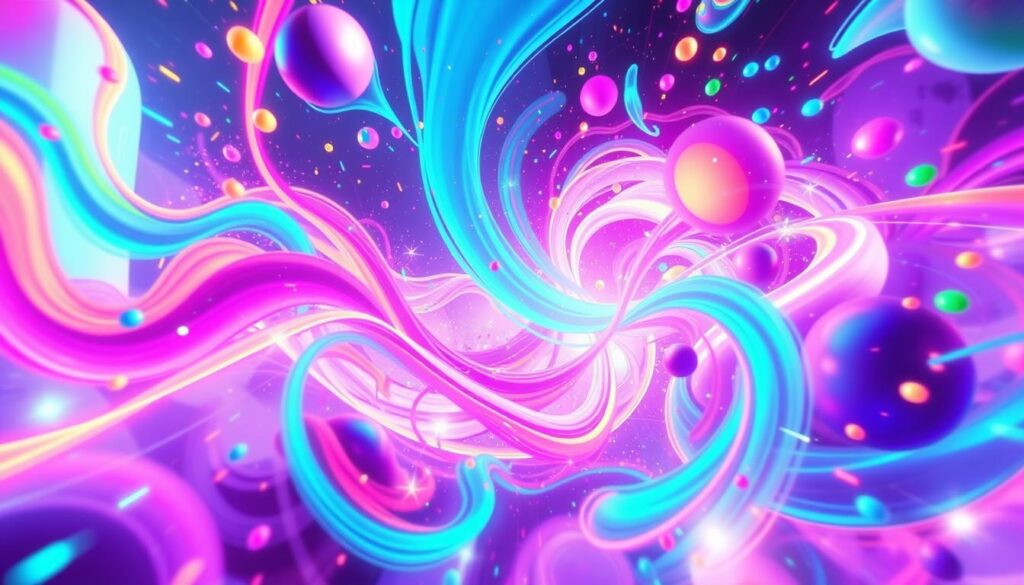
| Application | Purpose | Effectiveness |
|---|---|---|
| Commercials | Engage viewers | High |
| Title Sequences | Set the tone | Medium |
| Online Content | Educate and inform | High |
| Event Promotions | Create excitement | High |
Incorporating motion graphics into CGI production not only enhances the aesthetic appeal but also serves to communicate messages in a clear and engaging manner. This development reflects the growing trend of integrating dynamic visuals into various forms of media, reinforcing the importance of this artistic discipline in today’s digital landscape.
The Science Behind Image Processing
Image processing plays a crucial role in the realm of CGI animation, where quality and detail are of utmost importance. The ability to manipulate images not only enhances visuals but also ensures that animations meet the highest standards of animation quality. Various CGI techniques utilize specific methods to achieve this, resulting in captivating and engaging content for viewers.
Image Processing Techniques Used in CGI
To improve the visual appeal of animations, several image processing techniques are employed:
- Interpolation: This technique helps in creating smooth transitions between frames, enriching the overall flow of animation.
- Noise Reduction: Removing unwanted artifacts from images contributes to clearer visuals that capture audience attention.
- Image Enhancement: Adjusting brightness, contrast, and color balance elevates the overall visual experience.
The Impact of Image Processing on Animation Quality
The integration of effective image processing techniques significantly influences the final output of CGI animations. As a result:
- Animations appear sharper and more detailed.
- Viewers experience a more immersive environment, enhancing engagement.
- The production value reaches new heights, making it easier to convey stories and emotions.
Overall, the science behind image processing in CGI contributes to the creation of stunning visuals that resonate with audiences, improving the entire animation quality spectrum.
Exploring Multimedia Production in CGI
Multimedia production plays a crucial role in the dynamic field of CGI. By integrating various digital art tools, creators can develop engaging visual narratives that captivate audiences. This integration allows for the seamless blending of video editing, sound design, animation, and graphic design, resulting in a cohesive storytelling experience.
The Integration of Various Digital Art Tools
Different digital art tools contribute to the multimedia production process in unique ways. Tools such as Adobe After Effects, Blender, and Final Cut Pro allow artists to manipulate visual elements, while programs like Adobe Audition enhance audio components. This synergy enhances the overall project by maximizing CGI integration, thereby producing professional-grade content that resonates with viewers.
- Video Editing Software: Facilitates cutting and assembling footage for a polished final product.
- Animation Tools: Allows for the creation of mesmerizing motion graphics and animations.
- Sound Design Software: Provides audio editing capabilities to enrich the multimedia experience.
- Graphic Design Programs: Enables the creation of stunning visuals to complement narratives.
As the multimedia production landscape continues to evolve, digital art tools remain essential for artists aiming to push the boundaries of creativity in CGI. The ongoing development and refinement of these tools will further enhance CGI integration, leading to even more imaginative and immersive experiences.
| Digital Art Tool | Main Function | Notable Features |
|---|---|---|
| Adobe After Effects | Video Editing & Compositing | Layered animations, visual effects, motion graphics |
| Blender | 3D Modeling & Animation | Open-source, versatile tool, real-time rendering |
| Final Cut Pro | Video Editing | Magnetic timeline, advanced color grading |
| Adobe Audition | Audio Editing | Multi-track editing, sound restoration tools |
Computer Graphics and Animation: A Seamless Blend
Computer graphics and traditional animation create a rich tapestry of visual storytelling, blending modern and classic animation techniques. Each approach has its unique strengths, allowing artists to craft compelling narratives. A deeper understanding of their differences provides insightful perspectives on the evolution of visual art.
Differences Between Computer Graphics and Traditional Animation
Traditional animation involves skillful hand-drawn techniques where artists illustrate each frame to create movement. This process can be time-consuming yet allows for a distinctive artistic flair. In contrast, computer graphics leverage advanced software, opening up new avenues for 3D modeling and animation. With the ability to manipulate images and render scenes instantly, computer graphics can achieve high levels of detail and realism.
- Artistic Style: Traditional animation often maintains a warmer, hand-crafted feel, whereas computer graphics can produce glossy, hyper-realistic visuals.
- Flexibility: Computer graphics provide creators with tools for rapid adjustments and diverse effects, while traditional animation requires revisiting drawings for changes.
- Production Speed: Computer graphics can generally accelerate production timelines, thanks to automation in rendering processes.
The seamless blend of these two domains cultivates an innovative space for creators, incorporating elements from both frames and pixels. By understanding these differences, animators can leverage the best of both methods to enhance their storytelling capabilities.
Computational Photography in CGI Animation
In the realm of CGI animation, computational photography plays a pivotal role in enhancing visual storytelling. This innovative field combines traditional photography techniques with advanced image manipulation, leading to the creation of stunning and realistic animations. By utilizing various CGI techniques, artists can achieve lifelike visuals that captivate audiences.
The Role of Computational Photography in Creating Realistic Animations
Computational photography enables animators to craft environments that feel authentic and immersive. Techniques such as depth mapping allow for the accurate portrayal of spatial relationships, making scenes more relatable. Furthermore, image stitching combines multiple photographs into a single cohesive image, providing a seamless backdrop for animated narratives.
These methods offer artists greater flexibility and innovation in their work. The integration of real-world elements with digital components creates a unique blend, pushing the boundaries of what is possible in animation. This fusion results in visuals that draw viewers into the story, enhancing their overall experience.
| Technique | Description | Benefits |
|---|---|---|
| Depth Mapping | Creating 3D representations based on two-dimensional images. | Increases realism by accurately depicting spatial relationships. |
| Image Stitching | Combining multiple images to form a single panoramic image. | Provides expansive backgrounds for animation, enhancing immersion. |
| High Dynamic Range Imaging | Integrating multiple exposures to capture detail in shadows and highlights. | Enhances lighting and contrast, producing vivid visual effects. |
Digital Art Tools: Essential for CGI Creators
In the world of CGI animation, digital art tools serve as the backbone for animators, enabling them to craft stunning visual content. These tools encompass a range of functionalities essential for painting, sculpting, and designing engaging animations. With the right digital art tools, creators can significantly enhance their workflow, optimizing the way they produce intricate CGI projects.
Popular Digital Art Tools for Animators
Animators often turn to well-established software to achieve their creative visions. Here are some of the most popular digital art tools currently in use:
- Adobe Photoshop – A versatile tool for creating and editing digital images, widely used for texture painting.
- ZBrush – Renowned in the industry for its advanced sculpting capabilities, allowing detailed character creation.
- SketchBook – Ideal for illustrators and animators looking to sketch out their concepts quickly and intuitively.
Utilizing these CGI tools not only streamlines the production process but also maximizes the creative potential of animators, making their visions come to life with stunning clarity.
The Future of CGI Animation Technology
As the digital landscape evolves, the future of CGI animation holds remarkable potential. Innovative technologies are reshaping the way creators approach animation, resulting in more dynamic and immersive experiences for audiences. The integration of virtual reality (VR) and augmented reality (AR) stands out as one of the most impactful emerging trends in the field of CGI technology.
Emerging Trends in CGI Animation
Several factors are influencing the future of CGI, prominently featuring:
- Virtual Reality (VR): This technology allows users to interact with 3D environments in a more profound way, turning static animations into engaging experiences.
- Augmented Reality (AR): By blending digital content with the real world, AR is enhancing storytelling and viewer interaction.
- Machine Learning: Algorithms are being employed to streamline the animation process, making it quicker and allowing creators to focus on artistic elements.
- Enhanced Rendering Techniques: Tools like Unreal Engine are setting new benchmarks for real-time rendering, leading to stunning visual fidelity.
The capabilities of CGI technology continue to expand, paving the way for a new era of multimedia production that melds creativity and technological advancement.
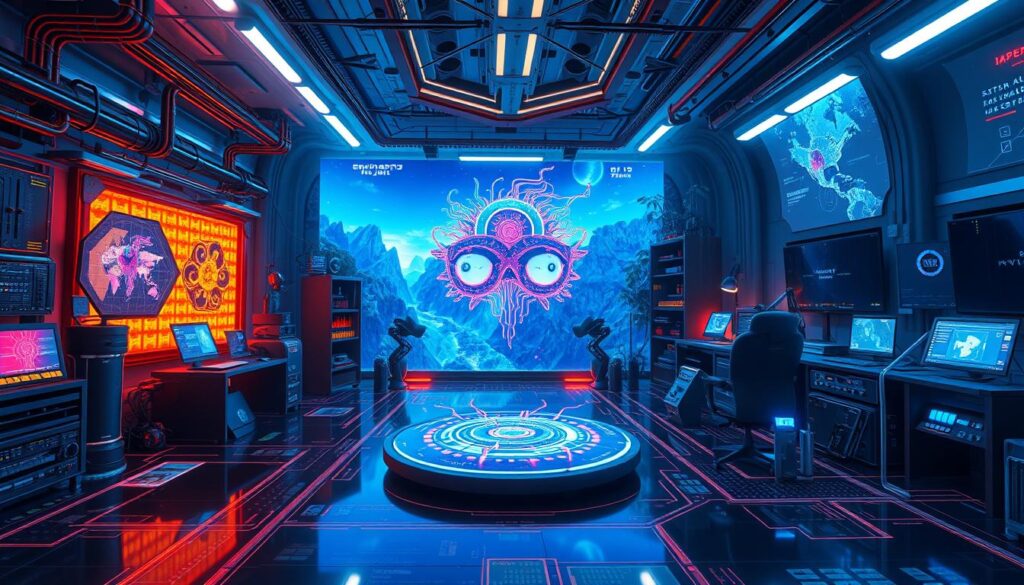
Conclusion
CGI animation stands as a cornerstone in the realm of digital creativity, continuously reshaping the landscape of artistic expression. With relentless advancements in animation technology, artists are equipped with an arsenal of sophisticated tools and innovative techniques. This evolution allows them to challenge conventional boundaries and create vivid, immersive storytelling experiences that resonate with audiences.
As new software solutions emerge and integration of diverse digital tools becomes seamless, the capabilities within CGI animation expand exponentially. The fusion of creativity and technology is evident as artists leverage these advancements to spark imagination and deliver captivating narratives. The ongoing innovation ensures that the realms of animation are not only explored but also redefined, propelling the industry into uncharted territories.
Looking ahead, the potential of CGI animation appears boundless. With the rise of virtual realities and enhanced visual effects, the future promises even more dynamic storytelling possibilities that challenge and engage viewers. The synergy between cutting-edge animation technology and creative vision underscores a vibrant future for CGI animation, inviting both artists and audiences to embark on new creative journeys.

